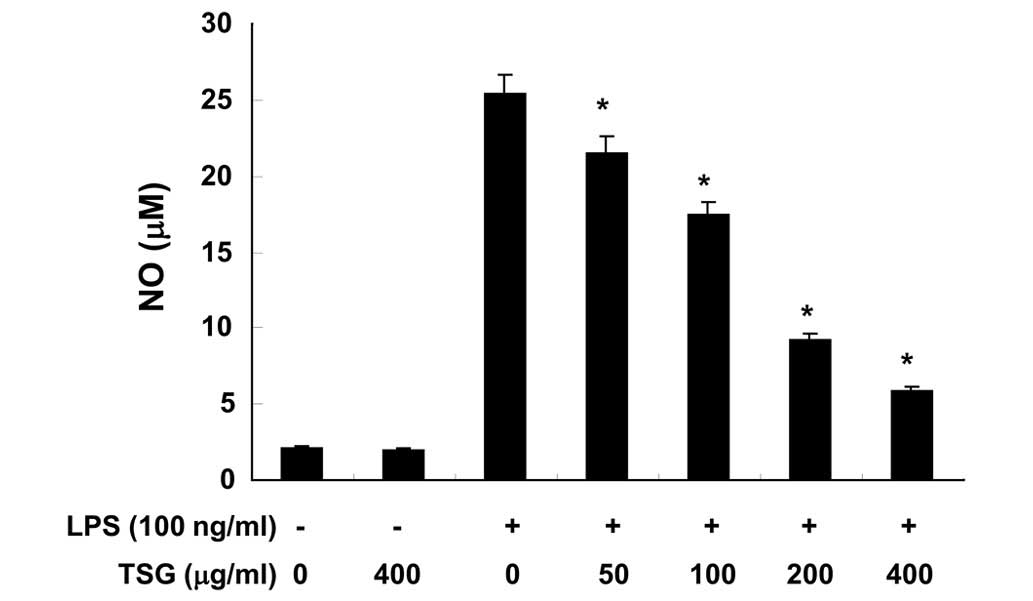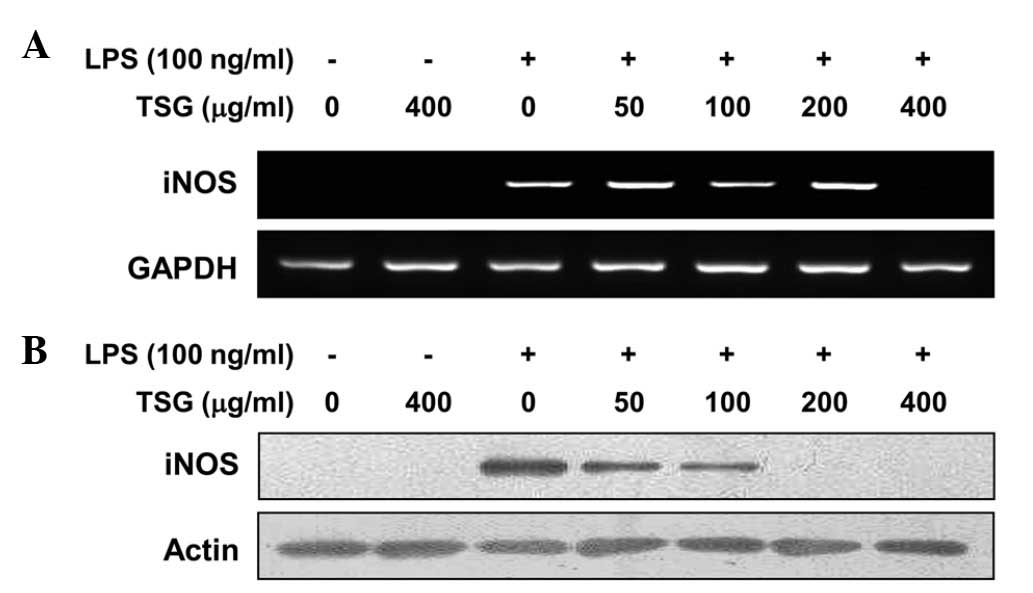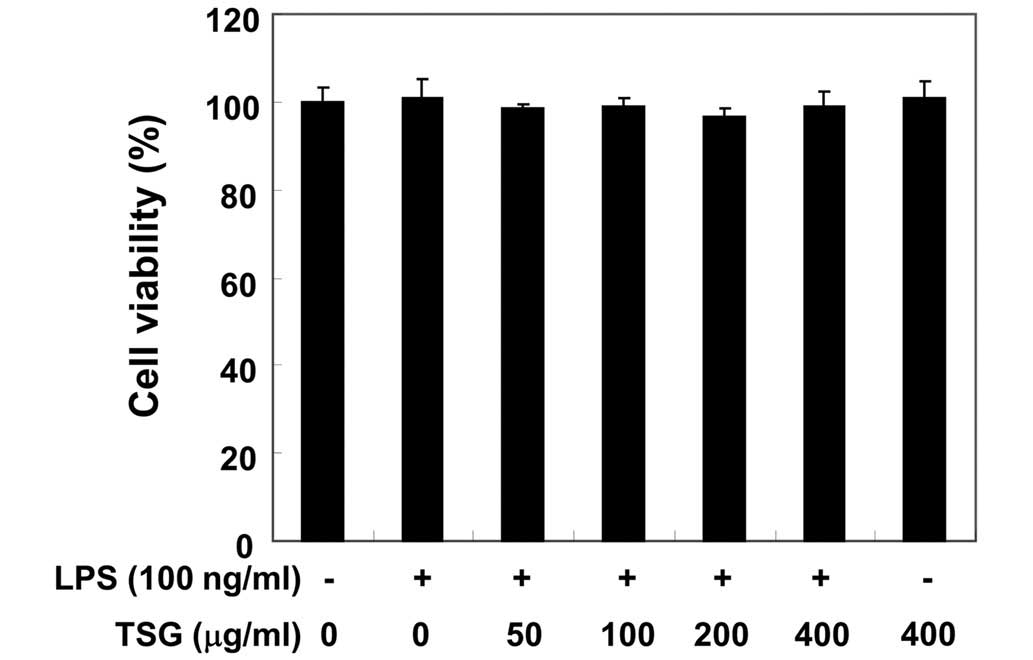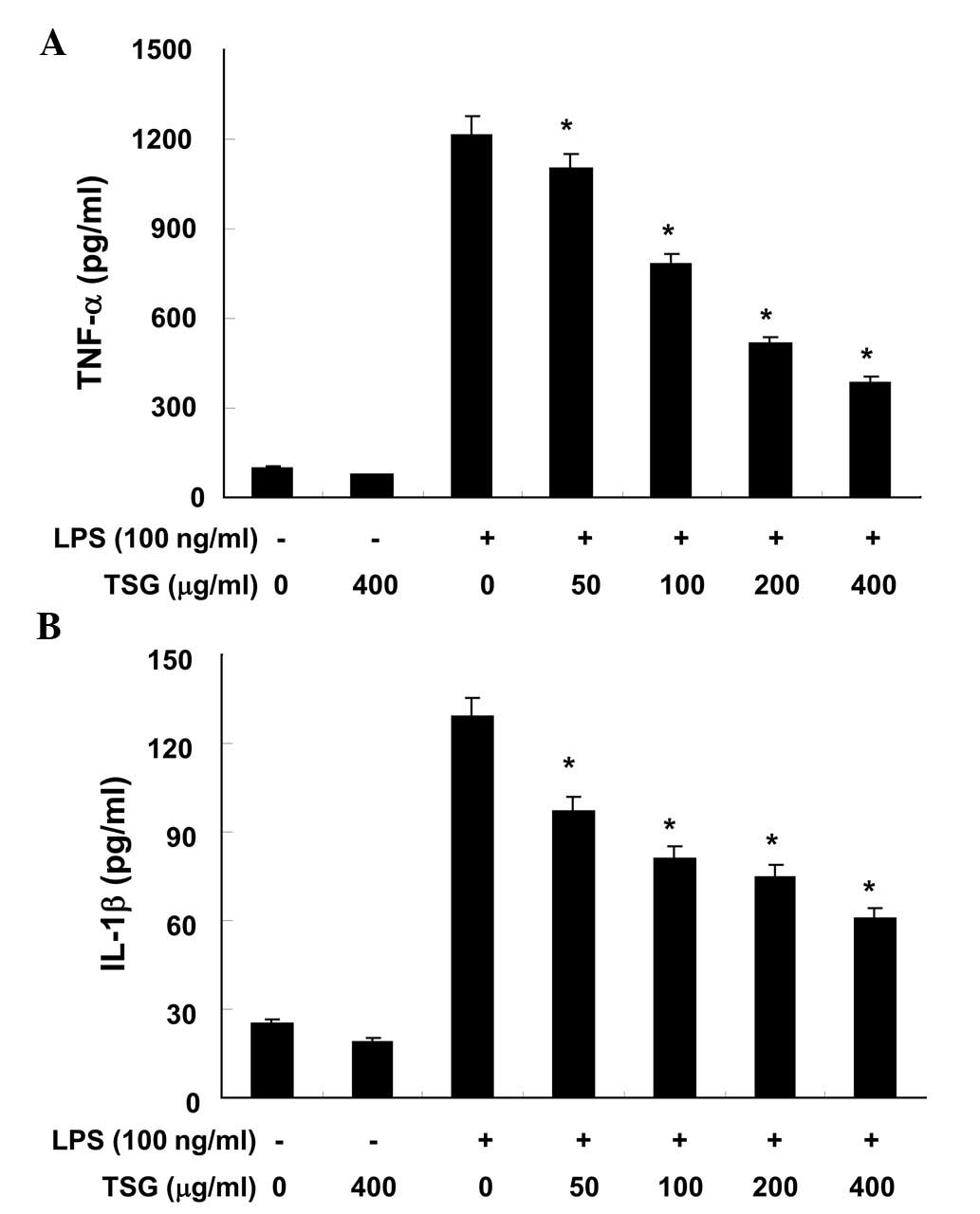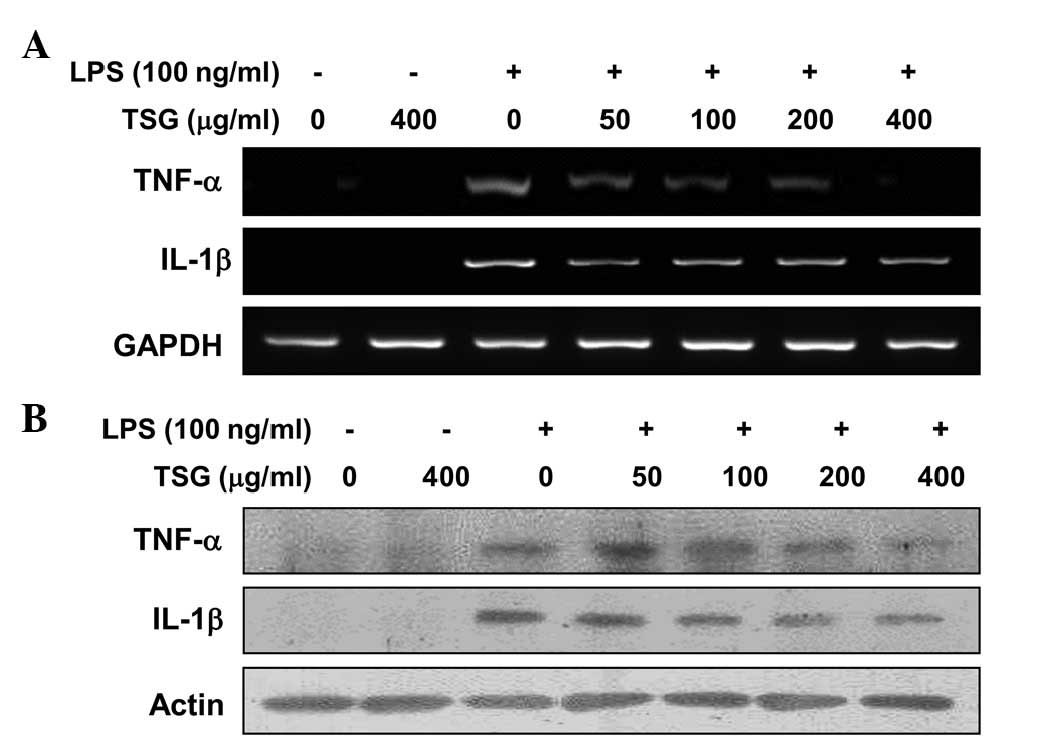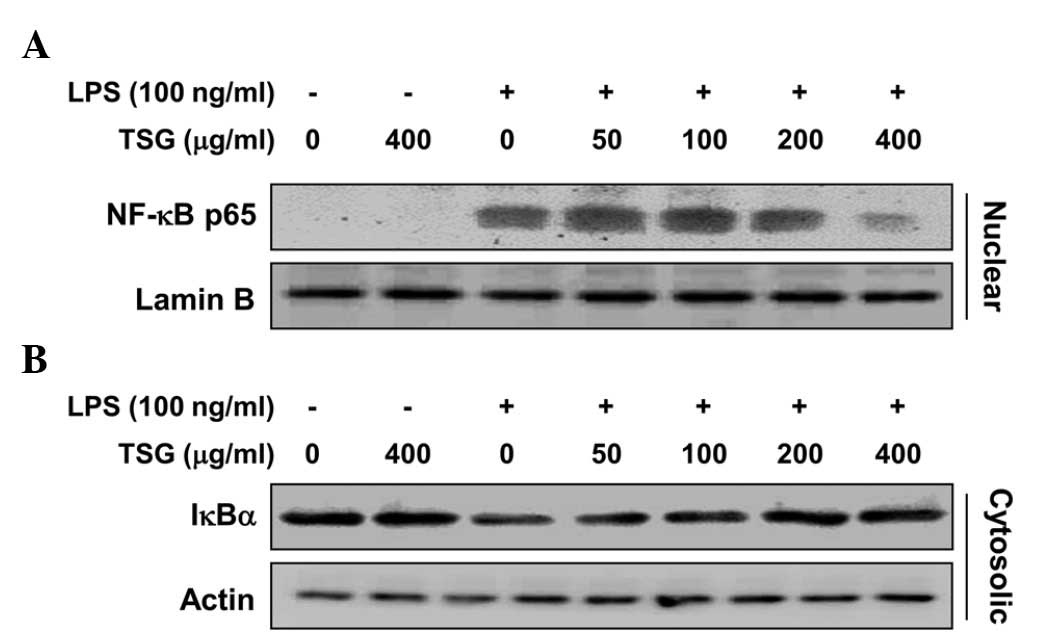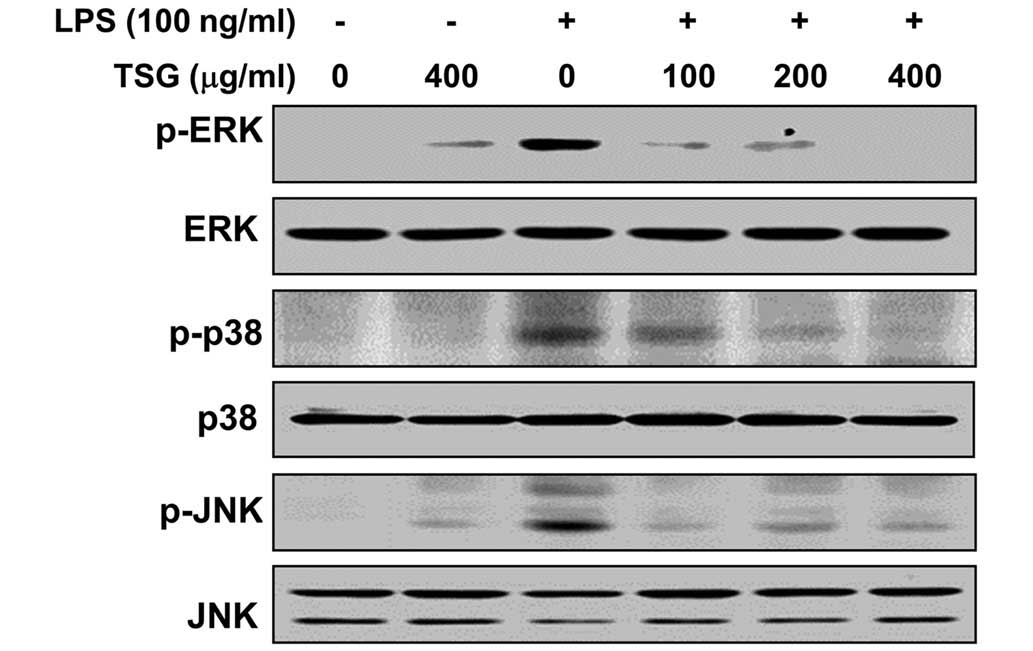Spandidos Publications style
Jang KJ, Choi SH, Yu GJ, Hong SH, Chung YH, Kim CH, Yoon HM, Kim GY, Kim BW, Choi YH, Choi YH, et al: Anti‑inflammatory potential of total saponins derived from the roots of Panax ginseng in lipopolysaccharide‑activated RAW 264.7 macrophages. Exp Ther Med 11: 1109-1115, 2016.
APA
Jang, K., Choi, S.H., Yu, G.J., Hong, S.H., Chung, Y.H., Kim, C. ... Choi, Y.H. (2016). Anti‑inflammatory potential of total saponins derived from the roots of Panax ginseng in lipopolysaccharide‑activated RAW 264.7 macrophages. Experimental and Therapeutic Medicine, 11, 1109-1115. https://doi.org/10.3892/etm.2015.2965
MLA
Jang, K., Choi, S. H., Yu, G. J., Hong, S. H., Chung, Y. H., Kim, C., Yoon, H., Kim, G., Kim, B. W., Choi, Y. H."Anti‑inflammatory potential of total saponins derived from the roots of Panax ginseng in lipopolysaccharide‑activated RAW 264.7 macrophages". Experimental and Therapeutic Medicine 11.3 (2016): 1109-1115.
Chicago
Jang, K., Choi, S. H., Yu, G. J., Hong, S. H., Chung, Y. H., Kim, C., Yoon, H., Kim, G., Kim, B. W., Choi, Y. H."Anti‑inflammatory potential of total saponins derived from the roots of Panax ginseng in lipopolysaccharide‑activated RAW 264.7 macrophages". Experimental and Therapeutic Medicine 11, no. 3 (2016): 1109-1115. https://doi.org/10.3892/etm.2015.2965















